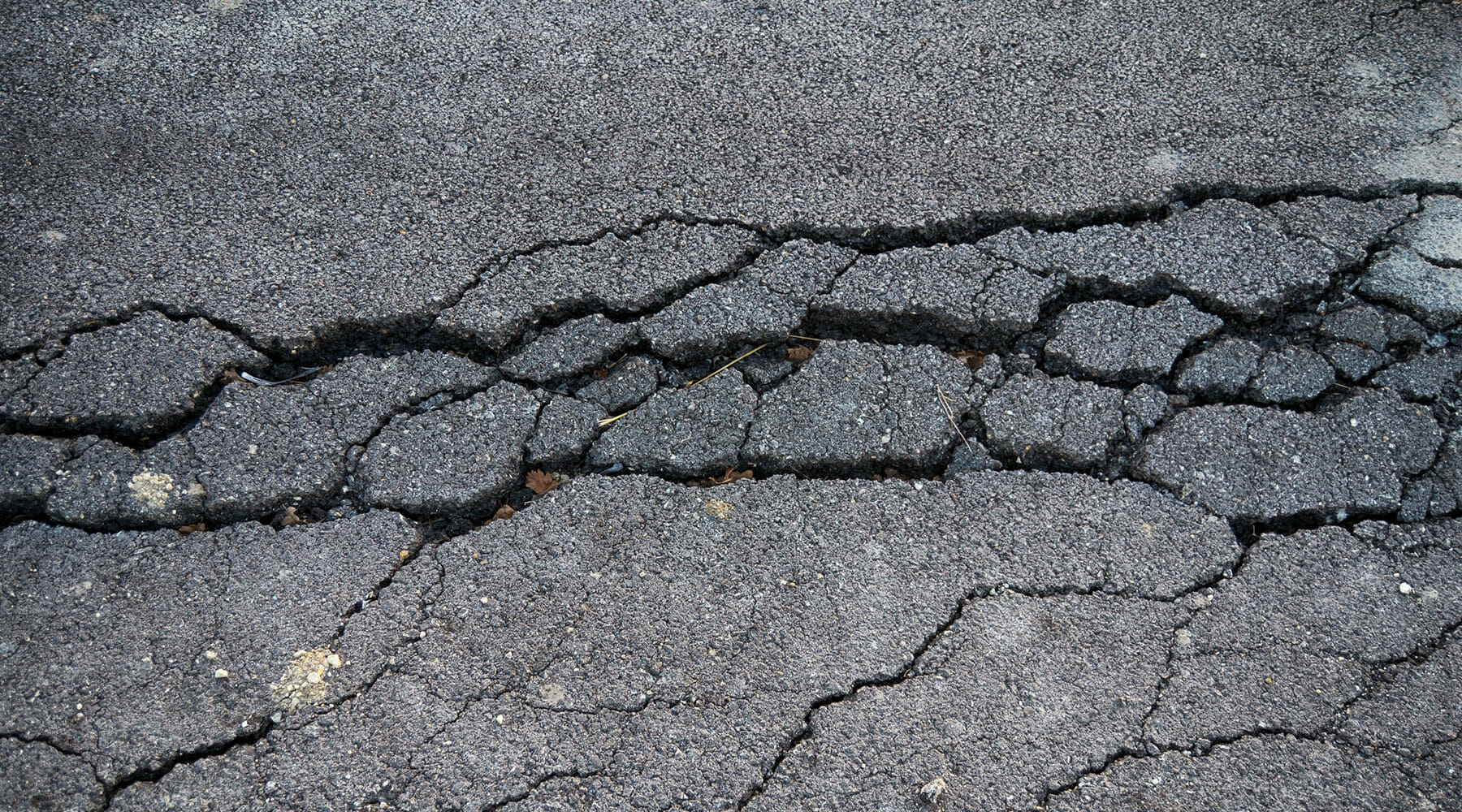Asphalt wear and tear is very common. You’ve likely seen cracked or broken asphalt paving as you navigate your daily life in parking lots or on roads. Unfortunately, if your asphalt paving company didn’t mix or apply the asphalt correctly, your blacktop could need pavement repair sooner rather than later. Weather is another culprit that can severely distress your pavement.
Watch out for these common asphalt problems and learn if you can solve your issue with an asphalt maintenance plan or if you need your asphalt pavement repaired.
5 Common Asphalt Problems & Solutions
These common issues can destroy your asphalt. Know how to spot and fix them.
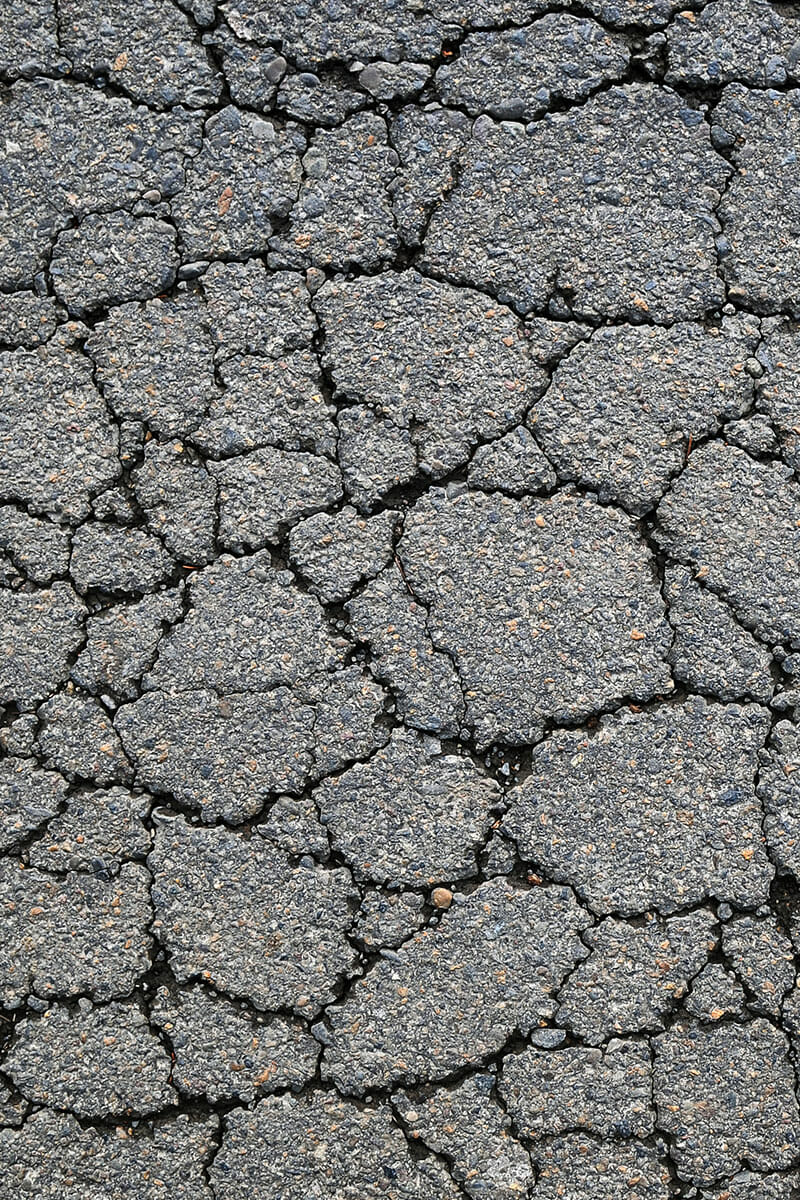
1. Cracking
Cracking is the most common problem that happens to asphalt. Asphalt cracks come in various shapes and have multiple causes and solutions.
Alligator Cracking
When a section of asphalt cracks in multiple places and directions, creating pieces that resemble scales, that’s called alligator cracking. A poorly compacted base upon installation can cause the underlying structural problems that cause alligator cracking.
If you have alligator cracking, get a paver to remove the damaged area. Then the paver can repack the base and repave the section.
Block Cracking
Cracks that create large squares or rectangles are called block cracking. The weather usually causes block cracking by shrinking the asphalt. We see block cracking a lot in asphalt repair in Salt Lake City because of the massive temperature fluctuations.
Fix minor block cracking by filling the crack with sealant, then re-sealcoating the entire area. You may need to completely replace asphalt with severe block cracking.
Edge Cracking
Edge cracking refers to damage near the sides of a section of asphalt. Edge cracking often occurs when the foundation layer erodes under the asphalt from the side. Then, the unsupported asphalt cracks.
You can patch minor edge cracks. But to prevent them from reappearing, the foundation needs to be replaced and protected from further erosion. Excessive edge cracking can require removing the asphalt, repairing the base layer, then repaving.
Longitudinal Cracking
Longitudinal cracking is when the pavement cracks lengthwise or parallel to the lane lines on a road. Shrinking asphalt causes longitudinal cracking. Usually, the asphalt shrinks due to weather fluctuations. We see this sometimes in asphalt repair in Las Vegas.
You can seal longitudinal cracks that are on the small side. For longer cracks, get a professional paver to look for structural issues and repave.

2. Depressions
Depressions are sinkholes in your asphalt. They occur when the structure beneath the asphalt develops a weak spot. The soft spot could result from poor installation, too much weight, or simply time.
Repair repressions quickly because they will collect water. If that water freezes overnight, it can cause further damage to your asphalt.
You can patch more minor depressions, but without addressing the weak spot below the asphalt, the craters may return. Get help from a professional asphalt paver if you have recurring or substantial depressions.
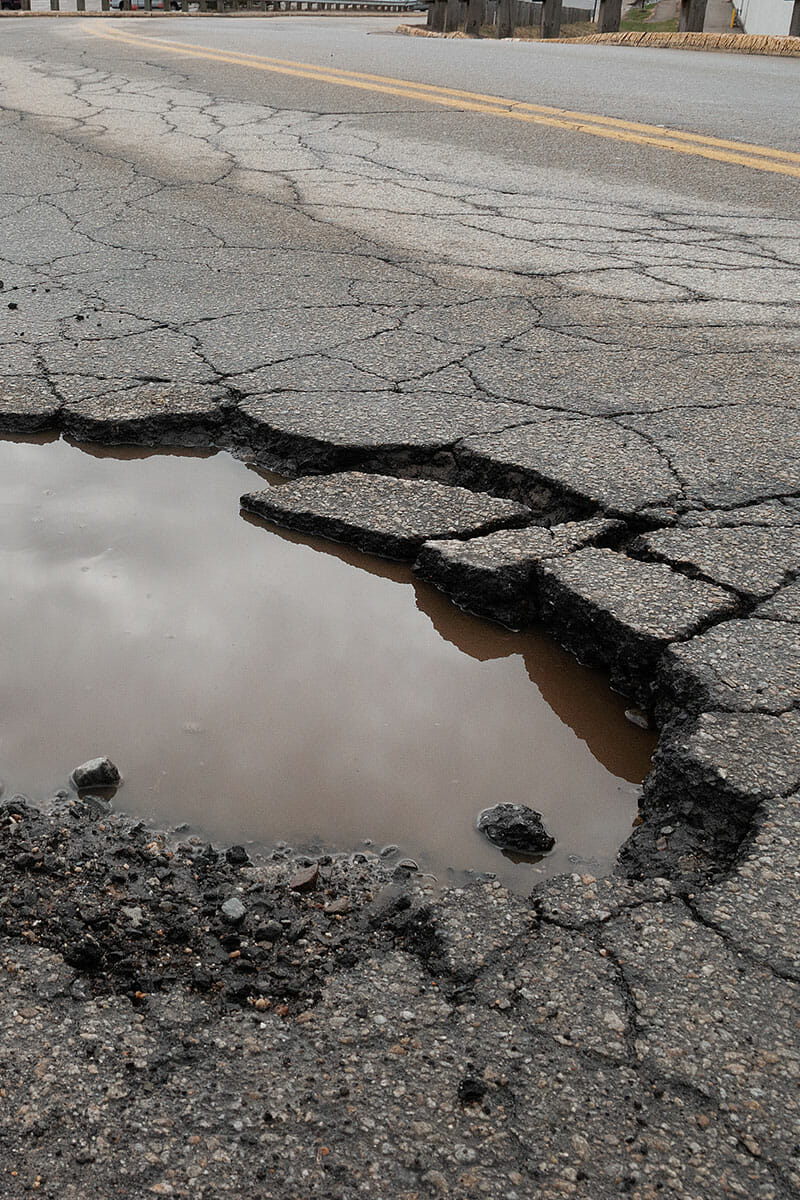
3. Potholes
A pothole is what’s left when a chunk of asphalt breaks off in the middle of the pavement. Hitting a pothole can seriously damage a car. Potholes occasionally form on their own, but more frequently, they result from the neglect of other types of asphalt damage until it is too late.
To repair a pothole, first, clean it out. Next, compact the base and add as much additional base as is needed. Then patch the pothole.
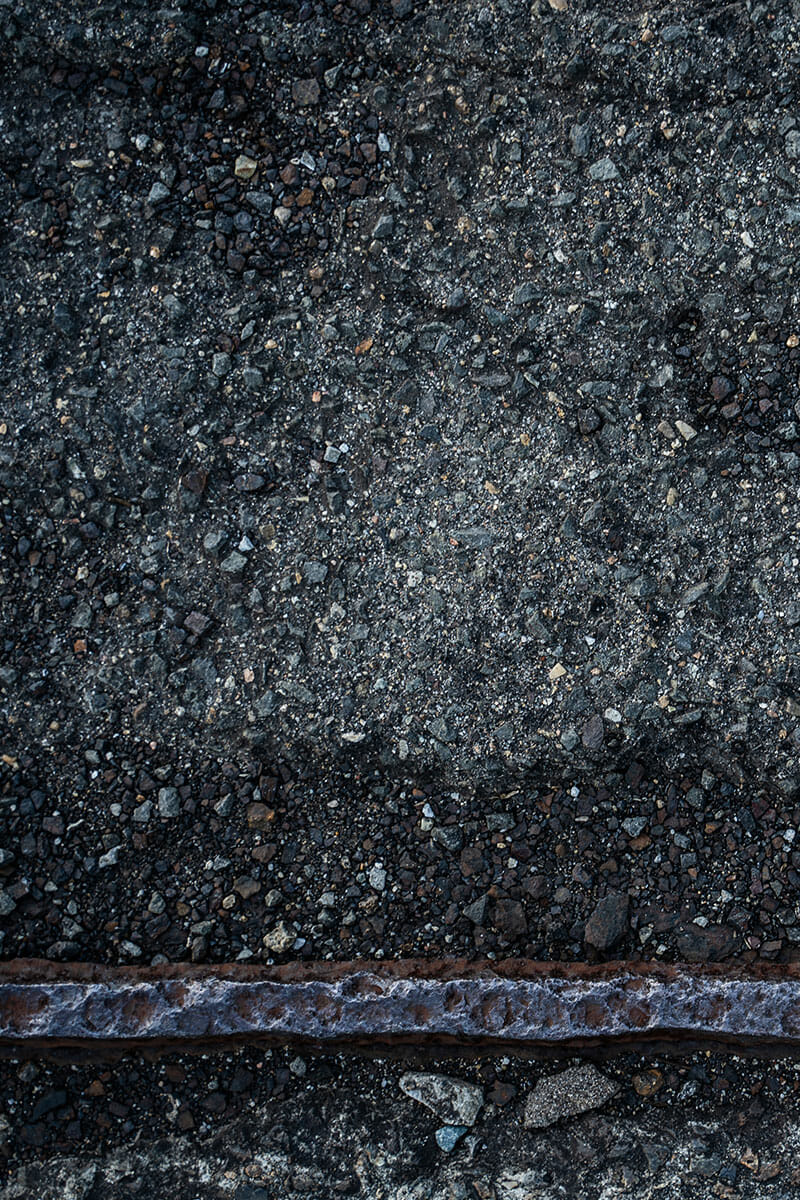
4. Raveling
Raveling occurs when part of the asphalt compound erodes, leaving the remaining material loose and uneven. The compounds in asphalt will slowly break down over time, but other factors can contribute heavily to raveling. For instance, wind consistently blowing sand across the pavement’s surface will accelerate the raveling process. We see this a lot in Arizona asphalt repair as the desert wind wreaks havoc on the pavement.
Some raveling can be fixed by clearing the loose pieces, then reapplying the asphalt to the damaged areas. Severe raveling may require replacing the entire section of asphalt, especially when the asphalt is more than ten years old.
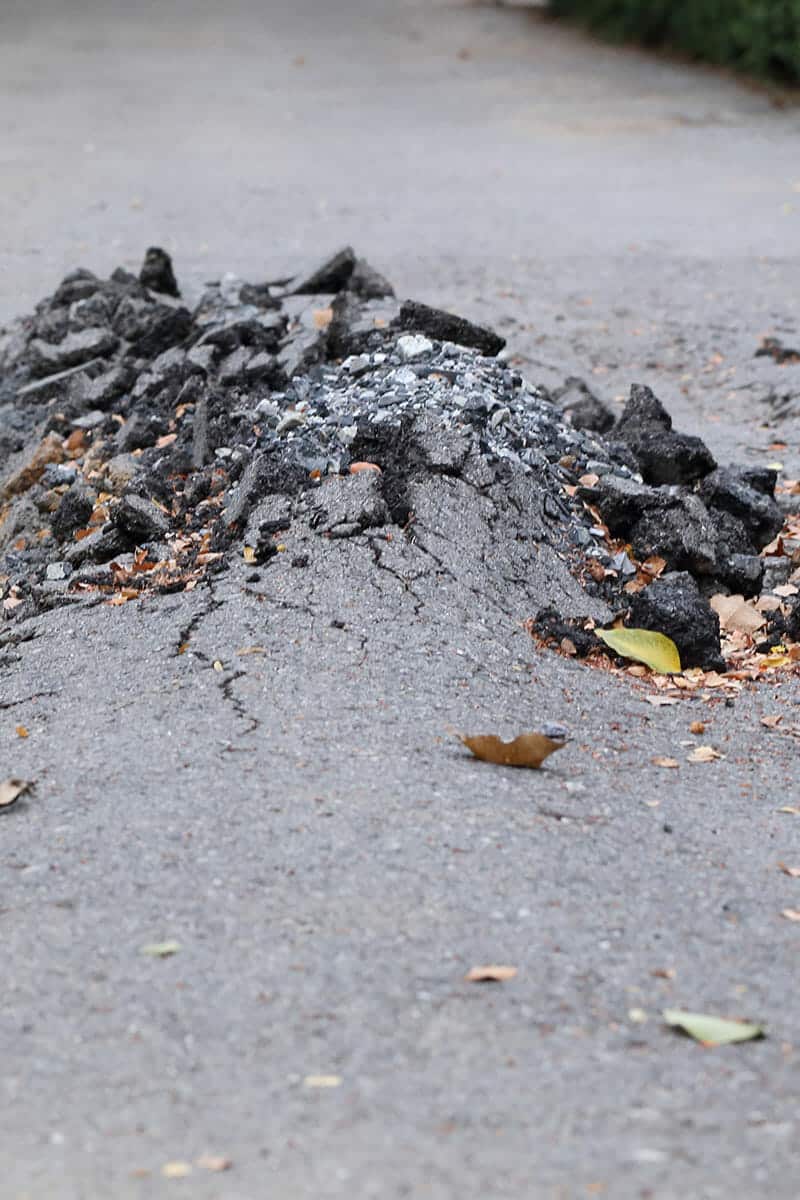
5. Upheaval
Upheaval occurs when the sub-level of the asphalt pushes upward, usually from freezing or oversaturation, and breaks the asphalt.
Since the upheaval problem started below the asphalt, that is where it needs to be repaired. Remove the damaged asphalt and the raised sub-level. Then you can use asphalt patch to fill in the affected area. If the damage is extensive, it may require repaving.
Why It’s Worth Turning to Professional Asphalt Pavers
As you can see, most of these common asphalt problems require pretty extensive repairs. If the repairs aren’t done correctly, the problem will likely get worse. Don’t risk trying to handle these repairs on your own. Doing so could turn a relatively easy fix into a total repave. Leave your asphalt paving, maintenance, and repair to the professionals.
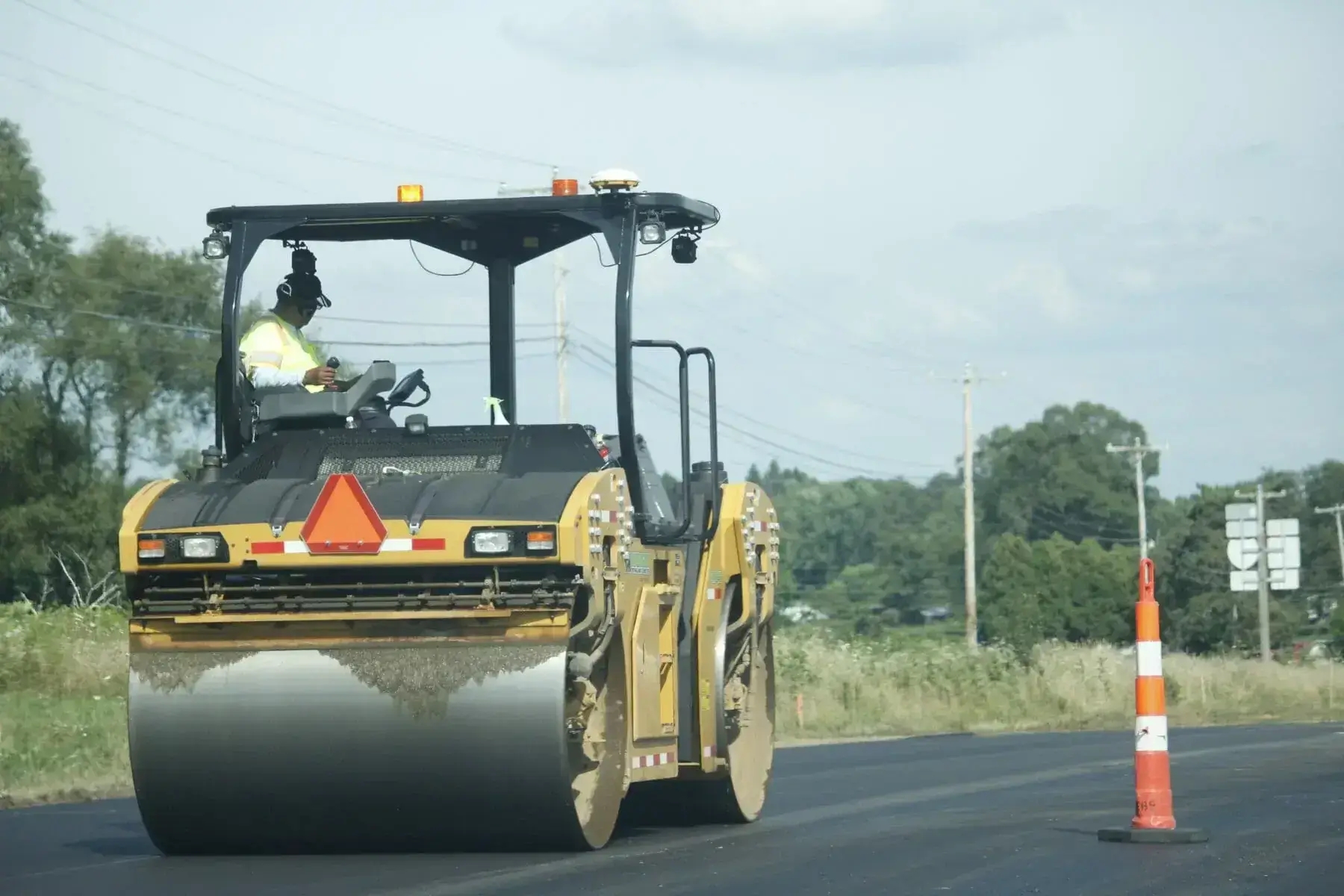
Contact Us for Asphalt Repair in Salt Lake City, Las Vegas, or Arizona
The experts at Morgan Pavement know that the severe weather conditions of the Mountain West can regularly damage your asphalt. We can help you with all your asphalt needs.
Protect your current asphalt with an asphalt maintenance plan. Repair or replace old and damaged asphalt, or get fresh new pavement. Morgan Pavement does sealing, repaving, resurfacing, crack repair, asphalt patching, asphalt paving, concrete paving, grading and excavating services, onyx mastic sealing, slurry sealing, and striping. We can help you keep your safe and looking fantastic.
Contact Morgan Pavement today to request a bid on your asphalt repair project.

